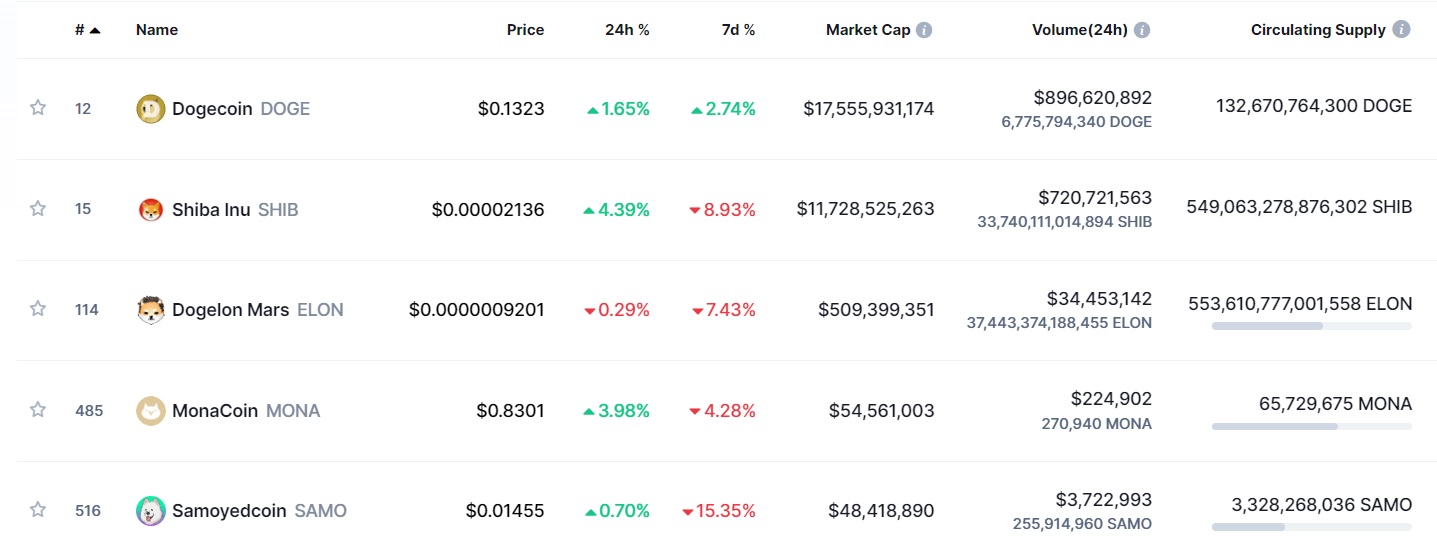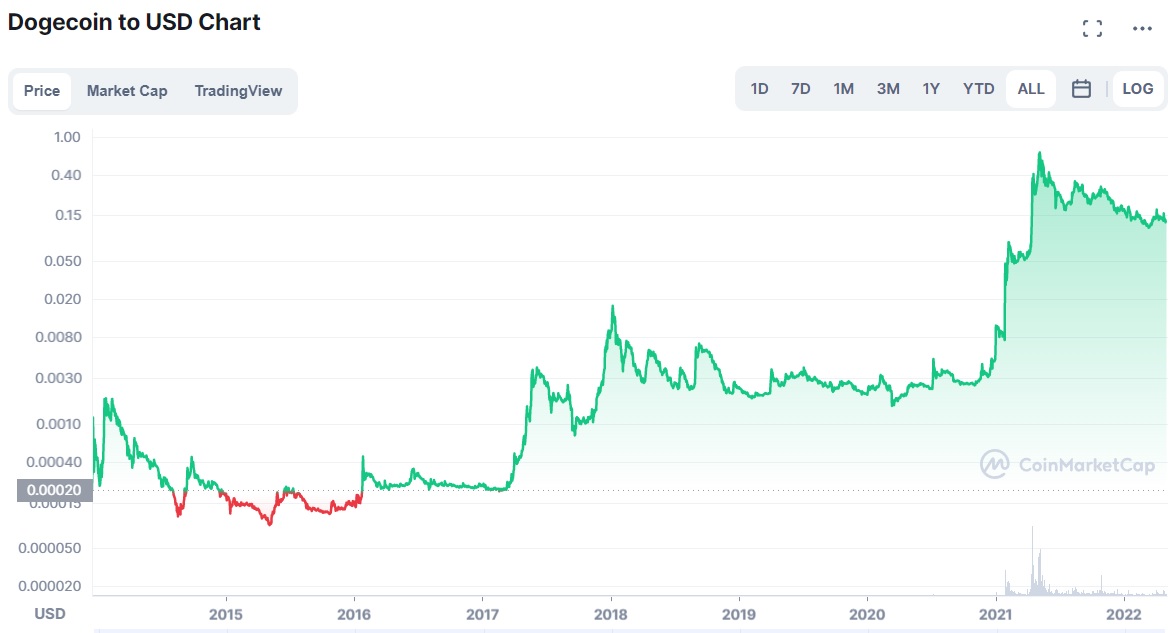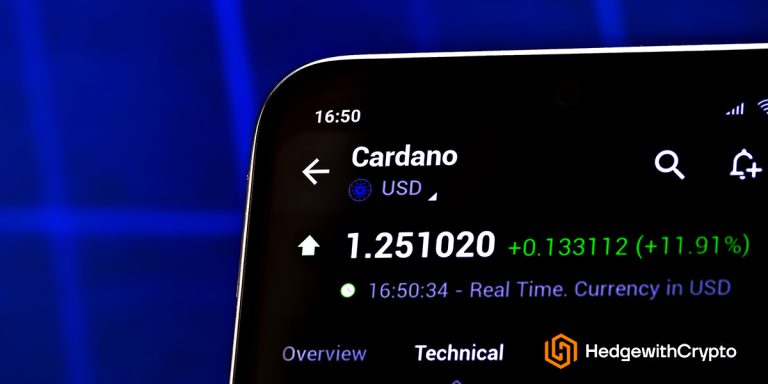This Is What Dogecoin Is & How It Works
Key Takeaways:
- Dogecoin is a meme coin based on the Japanese Shiba Inu dog.
- The Dogecoin blockchain is based on a fork of the open-source and P2P blockchain of Litecoin.
- Originally intended as a joke, DOGE now ranks among the world's top 15 digital currencies based on market cap.
TABLE OF CONTENTS
On the 25th of April 2022, crypto godfather and richest man in the world, Elon Musk, shelled out $44 billion to purchase Twitter. Within 24 hours, the price of Dogecoin jumped dramatically, pumping from 12 cents to 17 – an increase of over 40%. It’s a little unnerving that the actions of one person can make such a visceral impact on the price of a cryptocurrency, but that’s the reality of the world’s most popular meme coin – DOGE. In this article, we’ll dive into what makes Dogecoin special and assess whether it is a solid investment prospect going forward.
Let's Explain What Is Dogecoin
Dogecoin came to life in 2013, founded by American Billy Markus and Australian Jackson Palmer. Their original goal was to spoof the speculative nature of Bitcoin and other cryptocurrencies that had received serious investor interest without many legitimate use cases. In that sense, Dogecoin started as little more than a joke. It appropriated internet meme culture, honing in on the cute, fluffy Shiba Inu dogs that had become a sensation on message boards like 4chan and Reddit. The actual tech of the coin is based on an open-source fork, the P2P blockchain Litecoin.
While Dogecoin spent many of its formative years valued well below one US cent, it exploded in 2021, going up in price by 12,000% between January and May. The hysteria around Dogecoin, and meme-coins, for that matter, has cooled off a little in the past six months, but it is still the most popular and seminal ‘joke crypto’ to ever exist.

The legacy of Dogecoin has extended far beyond the cryptocurrency's actual value and use case. Its very existence spawned an entire culture of cryptocurrencies revolving around Shiba Inu, Dogelon, HOGE) and animals in general. New low market-cap/high-supply coins are being launched pretty much daily as a result of Dogecoin’s success. Although most of these newer entrants are questionable at best, DOGE has cemented itself as a legitimate player in the cryptocurrency industry with a market cap in the top 20 coins.
This Is What Dogecoin Can Be Used For
Although Dogecoin has evolved in stature since the mid-2010s, its functionality has remained pretty consistent. While DeFi, NFTs, and earning protocols have exploded, Dogecoin hasn’t strayed very far from its original philosophies – a cheap, fun way of sharing money with internet users around the world.
Previously, Dogecoin was intended as a joke to poke fun at the ridiculous price rises of Bitcoin in 2013 and did not offer any use case. Eventually, the creators Markus and Palmer abandoned the project, leaving the operation of Dogecoin in the hands of its devoted community. Because it had such a low value at this time – 0.00015 cents in 2015 – it started to be used as a method of tipping other people online.
Given that the Doge meme originated from message boards like Twitter and Reddit, it made sense that the coin would find a home there. People even began creating ‘bots’ that would automatically transfer DOGE to other internet users if requested.
The Pros & Cons of Dogecoin
Dogecoin has been around for nearly a decade and is one of the most well-known cryptocurrencies in the industry. Dogecoin is often used as an example of cryptocurrency being ‘worthless’. The pros and cons of Dogecoin are listed below.
Dogecoin Pros:
- Dogecoin has a large, constantly growing community that investors can participate in to receive updates, learn about the coin and contribute to its meme culture
- Based on Bitcoin and Litcoin's underlying blockchain tech, it is a good way of sending money globally without relying on banks or financial institutions
- Like Bitcoin and Ethereum, Dogecoin has a public pull and awareness that most other, newer coins don’t quite have. It was the first memecoin, and its popularity will likely remain stable even as challengers like SHIBA emerge. It has an identifiable culture that has permeated the internet in a way that hasn’t yet been replicated by other memecoins
- Due to Dogecoin’s popularity, it is readily available on the vast majority of exchanges and crypto trading platforms. This, paired with its high supply and low value, makes it very easy to buy, sell and swap the coin
Dogecoin Cons:
- The technology behind Doge hasn’t been updated since 2015, when the original developers left the project
- DOGE is an inflationary token, as there is no supply cap and new coins can be mined indefinitely. While this makes sense for Dogecoin being a cheaper, medium of exchange-oriented coin, constant inflation makes it harder for long-term price growth
- Price movements are often at the behest of celebrity influencers, particularly Elon Musk. An errant tweet from one of these celebs can completely alter the trajectory of Dogecoin’s price, making it an extremely volatile investment option
- Dogecoin isn’t particularly centralized, with only 1,282 network nodes operating at the time of writing. This leaves it somewhat more vulnerable to a 51% exploit and other security issues. For context, Bitcoin has about 8,000 active nodes
This Is How Dogecoin Works
Dogecoin is a fork of Litecoin, which itself is a fork of Bitcoin and shares a lot of technological similarities. It runs its own blockchain network, which utilizes a proof-of-work consensus mechanism to validate transactions. This method involves ‘mining’ – a series of computers solving complex algorithms to verify new ‘blocks’ (transactions) on the chain.
Dogecoin’s blockchain uses a much simpler algorithm than traditional PoW protocols, which means less computational power is required to mine DOGE. Around 14.4 million DOGE is mined every single day with around 140 billion already in circulation. The number of Dogecoins left to mine is theoretically difficult to calculate with the unlimited maximum supply.
The simpler mining method also means that Dogecoin has a much faster processing speed, with the technology able to execute approximately 30 transactions per second (TPS). This is a lot faster to process transactions compared to Bitcoin’s 7 TPS. To find out how long it takes to transfer Dogecoin, read this article next.
Investing In Dogecoin
Given Dogecoin’s high profile within the crypto and internet world, it is an extremely accessible coin. To buy Dogecoin are listed below – for a detailed breakdown and tutorial on how to buy DOGE, read this article which explains the best ways of buying Dogecoin:
- Centralized exchange. Centralized exchanges (CEX) are the easiest way to buy Dogecoin and are the most popular choice for advanced and beginner investors alike. These platforms are generally regulated by government entities and abide by basic know-your-customer and anti-money laundering laws. Examples include Binance, and Kraken.
- Decentralized exchange. Considering the immense stature of Dogecoin, it may be surprising to learn that it isn’t a big player in the DeFi world of crypto. It was only in 2021 when a Dogecoin-focused decentralized exchange (DEX) came to life, known as DogeEx and developed by Komodo. Since then, a few other DEXs have cropped up, and for the most part, they offer similar functions. Users can swap certain cryptocurrencies for Doge, or leverage earning opportunities like liquidity provision and yield farming.
- Brokers. Brokers are very similar to centralized exchanges, although their back-ends work completely differently. Instead of being matched with other buyers or sellers (like with a CEX), investors buy directly from the broker. These platforms will look very similar to a CEX and are typically just as easy to use. They tend to have higher minimum deposits and serve accredited/institutional investors more than CEXs, although this is not always the case. Examples include eToro, Uphold and Robinhood.
- Peer-to-peer platforms. Dogecoin can be purchased directly from someone who already owns the asset. This may be a family, friend, or complete stranger in a marketplace. This is one of the riskiest ways to acquire Dogecoin, so be sure to vet the seller thoroughly. To trade Dogecoin P2P, a wallet that supports the coin will need to be created.
Dogecoin As An Investment
Dogecoin is one of the most popular cryptocurrencies out there, boasting a vibrant community comprising a host of popular crypto influencers. Historically, Dogecoin has been a solid investment depending on when you invested in it. However, since the coin’s peak in early 2021, its value has been on a steady downward trajectory. Moreover, past performance is not a reliable indicator of future performance, particularly when it comes to a whimsical investment like Dogecoin.
As a serious asset, DOGE is lacking compared to titans like Ethereum, Bitcoin, and Cardano. Its very nature as a meme coin means its price is heavily tied to speculation, and its primary use relies on being a relatively cheap digital currency. That said, many in the community are bullish that Dogecoin could eventually exceed $1 USD in value on prestige alone.

Admittedly, its tech is lagging behind some of its competitors (meme coins or otherwise) and doesn’t receive much in the way of new features and updates. But coins with immense popularity and influencer pull have a history of succeeding in spite of use-case limitations – ApeCoin being a great present-day example.
Before deciding to buy Dogecoin, be aware that it is an extremely volatile token with an inflationary and unlimited supply. This is usually a deterrence for long-term investors. Its legacy as the meme coin does mean that it is likely to maintain value better than some alternatives, but it should mostly be considered as a fun way to participate in a thriving community instead of a serious money-making prospect.
Storing Dogecoin In Wallets
All cryptocurrencies are stored in a wallet. There is a huge range of cryptocurrency wallets available, varying from browser extensions to computer software or physical hardware.
Dogecoin has an official wallet developed by the community, aptly named Dogecoin. There are two applications: Multidoge, which is a faster “light” wallet; and Dogecoin Core, which is a heavier-duty, “full” wallet. These wallets can be downloaded on Windows, Linux, or Mac operating systems, and there is also an Android application available on the Google Play store. Beyond Dogecoin’s community offering, there are a number of other ways to store Dogecoin, these include cryptocurrency wallets that can be broken down into three categories – exchange wallets, hot wallets, and cold wallets.
- Exchange wallets. The vast majority of centralized exchanges come with a multi-token wallet that assets are automatically transferred to when purchased. Most people end up holding their crypto in an exchange wallet, although it is not always recommended. By leaving assets on an exchange, they are susceptible to hacks or exploits the platform may suffer. Additionally, they are in the custody of the exchange, meaning investors won’t have full control over their finances. The upside to keeping Dogecoin on an exchange is its convenience, particularly for crypto day traders. Examples include Bybit, Coinbase Wallet and Crypto.com.
- Non-custodial hot wallets. “Hot wallet” is an umbrella term for any wallet connected to the internet. In that sense, exchange wallets are hot too – however, they are custodial. A non-custodial wallet comprises any third-party application or software that stores your cryptocurrency. These wallets will provide investors with two keys – a public and private key – which allows them to easily send and receive Dogecoin. Hot wallets are convenient; however, they are riskier than cold wallets. This is because they are connected to the internet, which leaves them in danger of being hacked or exploited. Examples include Dogecoin, Trust Wallet, and Atomic.
- Cold wallets. A “cold wallet” is any wallet that isn’t connected to the internet. These wallets usually take the form of hardware like a USB dongle that can be plugged into your computer. While using a cold wallet to store DOGE is relatively inconvenient, the security it provides is well worth it. The most prominent example of a crypto cold wallet device is the Ledger Nano.
Conclusion
Dogecoin is a fun, immensely popular cryptocurrency that has captured the hearts of investors and the public alike. Although it has demonstrated a limited range of features and development, the coin is backed by a growing community of devoted enthusiasts.
Cryptocurrency is a very volatile asset, and Dogecoin’s high supply and inflationary nature make it even more so. That said, the coin has demonstrated it can break out of these shackles and push the $1 USD mark in the past – and the jury’s still out on whether it can replicate this feat.




